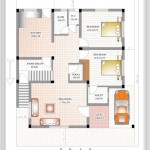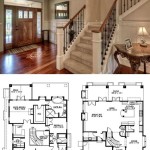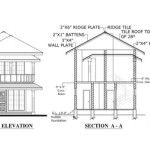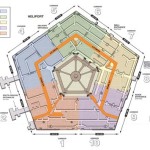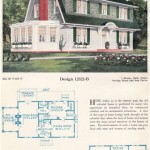Small Wood Greenhouse Plans: Cultivating Your Green Thumb in Limited Spaces
For gardening enthusiasts with limited space, a small wood greenhouse presents a practical and aesthetically pleasing solution to extend growing seasons and cultivate plants year-round. Unlike larger, more complex structures, small wood greenhouses are often manageable DIY projects, allowing gardeners to customize their spaces to specific needs and preferences. These greenhouses offer protection from harsh weather, pests, and temperature fluctuations, creating a controlled environment conducive to plant growth. The use of wood adds a natural and aesthetically pleasing element to the garden, blending seamlessly with the outdoor environment.
The appeal of a small wood greenhouse lies in its versatility. It can be used to start seedlings, overwinter tender plants, grow herbs and vegetables out of season, or simply provide a sheltered space for nurturing prized plants. The size and design can be adapted to fit available space, ranging from lean-to structures attached to existing buildings to freestanding units in gardens or on patios. Careful planning and the selection of appropriate materials are crucial to ensuring the greenhouse is both functional and durable.
Key Considerations Before Building
Before embarking on the construction of a small wood greenhouse, several critical factors require careful consideration. These include the available space, the intended use of the greenhouse, the local climate, and the budget allocated for the project. A thorough assessment of these aspects will inform the design and material choices, ensuring the final product meets the gardener's specific needs.
The first step involves evaluating the available space. This means accurately measuring the area where the greenhouse will be located and considering any obstructions, such as trees, fences, or buildings. The size of the greenhouse should be proportionate to the overall garden space, avoiding overcrowding and ensuring adequate accessibility for maintenance and plant care. A lean-to design, attached to a south-facing wall, is often a space-saving option for smaller gardens, while a freestanding structure provides greater flexibility in terms of placement and orientation.
The intended use of the greenhouse will also influence the design. If the primary purpose is to start seedlings in the spring, a smaller structure with good ventilation may suffice. However, if the goal is to overwinter larger plants or grow vegetables throughout the year, a larger and more insulated greenhouse will be necessary. Consider the types of plants that will be grown and their specific environmental requirements, such as temperature, humidity, and light levels. Features such as shelving, benches, and ventilation systems should be incorporated into the design to accommodate these needs.
The local climate plays a significant role in determining the greenhouse's construction and materials. In regions with harsh winters, insulation and heating systems will be essential to protect plants from freezing temperatures. In areas with hot summers, shading and ventilation are crucial to prevent overheating. Consider the prevailing wind direction and the amount of sunlight the location receives. Positioning the greenhouse to maximize sunlight exposure during the winter months and minimize it during the summer months can significantly improve its efficiency. The impact of snow load should also be considered in areas with heavy snowfall, requiring a sturdier frame and roof design.
Finally, establish a realistic budget for the project. The cost of building a small wood greenhouse can vary depending on the size, materials, and complexity of the design. Research the prices of lumber, glazing materials, hardware, and other necessary components. Consider whether to purchase pre-fabricated greenhouse kits or build the structure from scratch. While kits may be more expensive upfront, they can save time and effort during construction. Building from scratch allows for greater customization but requires more experience and potentially more time. It is important to factor in the cost of tools, equipment, and any necessary permits or inspections.
Designing Your Small Wood Greenhouse
Once the preliminary considerations have been addressed, the design phase can begin. This involves creating detailed plans that specify the dimensions, materials, and construction techniques for the greenhouse. Accurate and well-defined plans are essential for ensuring a successful and efficient build.
Start by sketching out the basic shape and layout of the greenhouse. Consider the desired height, width, and length. A common design is a simple rectangular structure with a gable roof, which provides good headroom and allows for efficient drainage of rainwater and snow. However, other designs, such as hoop houses or geodesic domes, can also be adapted for small wood greenhouses. The choice of design will depend on personal preference, available space, and budget.
Next, specify the materials that will be used for the frame, glazing, and foundation. Wood is a popular choice for the frame due to its natural aesthetic appeal, relative affordability, and ease of working. Pressure-treated lumber is recommended for ground contact to prevent rot and decay. Cedar and redwood are naturally rot-resistant options but are typically more expensive. The type of wood will impact the overall cost and longevity of the greenhouse. Consider using reclaimed or recycled wood to further reduce costs and promote sustainability.
The glazing material is another critical consideration. Glass is a traditional option that provides excellent light transmission but can be heavy and breakable. Polycarbonate panels are a lightweight and durable alternative that offers good insulation and UV protection. Polyethylene film is the least expensive option but is less durable and has a shorter lifespan. The choice of glazing material will impact the greenhouse's thermal performance, light transmission, and overall durability. Double-layered or insulated glazing can improve energy efficiency in colder climates.
The foundation of the greenhouse should provide a stable and level base. A simple gravel base can be sufficient for small, temporary structures. However, a more permanent foundation, such as concrete blocks or a poured concrete slab, is recommended for larger or more permanent greenhouses. The foundation should extend below the frost line in colder climates to prevent heaving and cracking during freeze-thaw cycles. A well-constructed foundation will ensure the greenhouse remains level and stable over time.
Finally, incorporate features such as vents, doors, shelving, and irrigation systems into the design. Ventilation is essential for regulating temperature and humidity levels. Roof vents, side vents, and automated vent openers can help to maintain optimal growing conditions. A door should be wide enough to allow for easy access with gardening tools and equipment. Shelving and benches provide space for plants and potting supplies. A drip irrigation system can automate watering and conserve water. Consider adding electrical outlets for lighting, heating, and other accessories.
Step-by-Step Construction Guide
With detailed plans in hand, the construction phase can begin. This involves cutting the lumber, assembling the frame, installing the glazing, and adding the finishing touches. A systematic approach and attention to detail are crucial for ensuring a structurally sound and aesthetically pleasing greenhouse.
Begin by gathering all the necessary materials, tools, and equipment. This includes lumber, glazing materials, hardware, saws, drills, levels, measuring tapes, and safety gear. Organize the materials and tools in a convenient location to streamline the construction process. Review the plans thoroughly to ensure all the required components are on hand.
Start by constructing the frame of the greenhouse. Cut the lumber according to the dimensions specified in the plans. Assemble the frame using screws, nails, or bolts. Ensure all joints are square and secure. Use a level to verify that the frame is plumb and level. Pay particular attention to the corners, which should be reinforced for added stability. If using pressure-treated lumber, wear gloves and eye protection to avoid contact with the chemicals used in the treatment process.
Once the frame is assembled, install the glazing. Cut the glazing material to the appropriate size and attach it to the frame using screws, clips, or sealant. Ensure the glazing is properly sealed to prevent air and water leaks. Use weather stripping around doors and vents to improve insulation and prevent drafts. If using glass, handle it with care to avoid breakage. Polycarbonate panels are easier to work with and less prone to damage. Overlap the glazing panels slightly to prevent water from seeping in between them.
Next, install the doors and vents. Construct the doors using lumber and hardware. Ensure the doors swing freely and latch securely. Install hinges and latches that are durable and weather-resistant. Attach vents to the roof or sides of the greenhouse using hinges and latches. Consider installing automatic vent openers that respond to temperature changes. These devices can help to maintain a consistent temperature inside the greenhouse without manual intervention.
Finally, add the finishing touches. Install shelving and benches to create space for plants and supplies. Run electrical wiring for lighting, heating, and other accessories. Seal any gaps or cracks in the frame to prevent air and water leaks. Paint or stain the wood frame to protect it from the elements and enhance its appearance. Add decorative elements, such as trellises or hanging baskets, to personalize the greenhouse. Once the construction is complete, inspect the greenhouse thoroughly to ensure it is structurally sound and functioning properly.
Maintenance and Upkeep
Maintaining the small wood greenhouse is essential for ensuring its longevity and optimal performance. Regular cleaning, repairs, and preventative measures will help to extend the lifespan of the structure and create a healthy environment for plants.
Regular cleaning is crucial for maintaining the greenhouse's light transmission and preventing the buildup of algae and mold. Clean the glazing materials periodically using a mild detergent and water. Rinse thoroughly to remove any residue. Remove any debris from the roof and gutters to prevent clogs and water damage. Clean the interior surfaces to remove dirt and dust. Wipe down shelving and benches to prevent the spread of pests and diseases.
Inspect the greenhouse regularly for signs of damage or wear. Check the frame for rot, cracks, or insect infestations. Repair any damaged areas promptly to prevent further deterioration. Replace any damaged glazing panels. Tighten any loose screws or bolts. Inspect the doors and vents to ensure they are functioning properly. Lubricate hinges and latches to keep them operating smoothly. Replace any worn weather stripping around doors and vents.
Implement preventative measures to protect the greenhouse from pests and diseases. Inspect plants regularly for signs of infestation or disease. Remove any infected plants promptly to prevent the spread of problems. Use organic pest control methods, such as insecticidal soap or neem oil, to control pests. Maintain good air circulation to prevent the buildup of humidity, which can promote fungal diseases. Clean up any fallen leaves or plant debris to eliminate potential sources of disease.

Greenhouse Plans Easy 8 X 9 Framed Gabled Build Singapore

Mini Greenhouse Plans Outdoor Woodworking Woodworkingasalifestyle Woodworkingforever Woodworkings Home

Best Diy Greenhouse Blueprints Kits And Plans
:max_bytes(150000):strip_icc()/greenhouse-buildeazy-5b69c8a546e0fb0050666b57.jpg?strip=all)
12 Free Diy Greenhouse Plans

12 Diy Greenhouse Plans For Gardeners On A Budget Bob Vila

Small Wooden Lean To Greenhouse Build Plans Only No Singapore

Small Gable Roof Greenhouse Ana White

12 Diy Greenhouse Plans For Gardeners On A Budget Bob Vila
:max_bytes(150000):strip_icc()/greenhouse-5c7d6eb9c9e77c00011c83f0.jpg?strip=all)
12 Free Diy Greenhouse Plans

Wooden Greenhouses Kits And Plans Family Food Garden Backyard Greenhouse Home Diy

